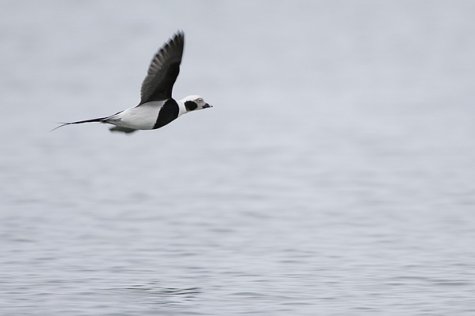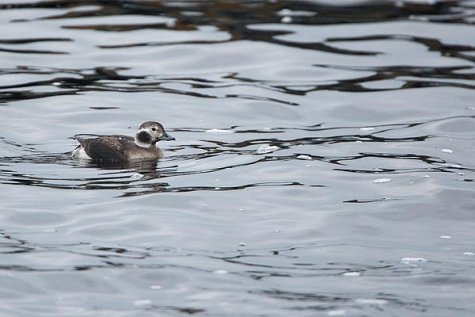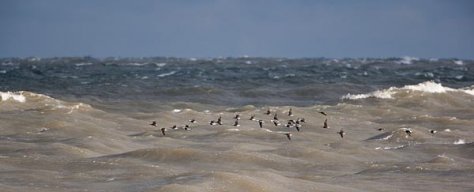A thousand long-tailed ducks on Tallinn Bay
Photos: Arne Ader
Translation:SilverT
Long-tailed duck
Long-tailed duck Aul Clangula hyemalis
The eastern wind that picked up since Wednesday evening forced the flocks of long-tailed ducks to move into more quiet waters of Tallinn bay. They winter in our coastal waters in large flocks – depending on the year, hundred to seven hundred thousand birds.
The appearance and the characteristics of the plumage of long-tailed ducks is greatly different from other geese, being influenced by the season, age and sex. Since 2012, long-tailed ducks are being considered as an endangered species worldwide.
Male birds have been dressed in winter plumage since October which looks lighter in flight and they certainly have long tail-feathers. When the body-length of an adult male bird is over forty centimeters, the tail-feathers add at least another twenty centimeters; adult birds weigh eight hundred grams. The head and the feathers on the neck are white, the cheek has a black spot, the bill is black and there is a red stripe on the base of the bill. Male birds have eyes with red pupils, legs are bluish grey.
Long-tailed duck
Female birds do not have long tail-feathers and although the plumage looks mostly similar to male birds`, there is less white in the plumage and it looks slightly duller. The bill is dark grey, pupils of the eyes are yellow, legs are greyish green and they are somewhat smaller in size than male birds and also weigh less.
Fast-flying divers find their food from the bottom of the sea, in waters up to ten meters deep – mostly invertebrates. One can see flocks migrating both day and night.
Long-tailed duck observations: LINK
Migrating long-tailed ducks











